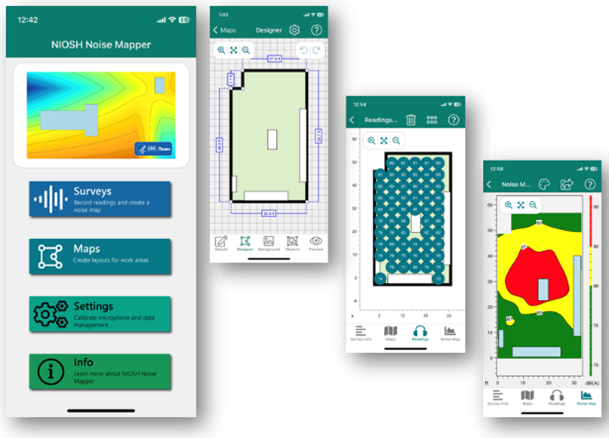Mining Project: A Needs Assessment to Prevent Occupational Noise-induced Hearing Loss at Mines in the U.S.
| Principal Investigator |
|
|---|---|
| Start Date | 10/1/2022 |
| Objective |
Exposure to high noise levels can increase physical and psychological stress levels, reduce productivity, and lead to inner ear hair cell neurodegeneration, resulting in permanent hearing loss. Noise exposure assessment and monitoring techniques have shown that the mining industry has been consistently plagued by noise overexposure. Numerous studies and surveillance initiatives indicate that mineworkers are more susceptible to noise overexposure and hearing loss than workers in other heavy industries. Due to continued noise overexposure and subsequent occupational noise-induced hearing loss (ONIHL) among miners, it is critical to conduct an industry assessment to identify the needs and potential solutions for preventing ONIHL among miners in the United States. |
| Topic Area |
Research Summary
Approach
This pilot project research involves identifying what the mining industry needs to reduce noise exposure and prevent ONIHL, which could include information on hearing protection beliefs and behaviors among workers, noise assessment needs, viable noise control solutions, issues related to hearing conservation programs, and challenges and expectations that have not been identified in mining but should be considered. Various formats will be used to collect information, including one-on-one interviews and questionnaires.
In related work, NIOSH is developing the NIOSH Noise Mapper, a mobile device application that can be used to create noise contour maps. Project researchers will evaluate whether the NIOSH Noise Mapper app can be used to accurately characterize the spatial distribution of sound levels at mining facilities. Point-of-view (POV) video will be used to define the relationship between personal noise exposure and workplace noise assessments and the potential for noise exposure assessment improvement. The POV video will be collected using the NIOSH-developed Helmet-CAM, a video-based exposure assessment tool designed specifically for the mining industry. The NIOSH-developed EVADE software will be used to combine the video footage with the dosimetry data to generate visual images corresponding to the high noise exposure areas.
Milestones and Accomplishments
| Description | Audience | Year |
|---|---|---|
| Develop NIOSH Noise Mapper and complete an internal and external technical review | academicians, safety and health professionals, workers, and employers | 2023 |
Planned Impacts and Outcomes
Researchers will use the collected data to identify the mining industry’s needs for addressing occupational noise-induced hearing loss among miners in the United States. Analysis of the combined video footage and dosimetry data will help researchers to assess a relationship between personal noise exposure and workplace noise assessments and identify the source or sources of noise exposure. Based on the study results, project researchers will develop guidelines and recommendations to prevent ONIHL and inform future research. The results will also be used to help evaluate the NIOSH Noise Mapper's accuracy and reliability, and the feedback collected will help to refine and improve the App.
Outputs
NIOSH anticipates two major outputs from this pilot project research: (1) a journal article detailing the results of the needs assessment of occupational noise-induced hearing loss among mining industry employees in the United States, and (2) the NIOSH Noise Mapper application being used on a smartphone to identify the source of noise exposure in the mining industry.
Supporting Visual

Screenshots from the NIOSH Noise Mapper Application, which can be used to provide visual images of the spatial distribution of sound levels within facilities. Facility management can incorporate these maps as supplemental information into hearing conservation programs. The App can help in identifying noise hazards and relevant noise-generating machinery and/or operations in order to prioritize and target the most effective interventions.
- Development and Evaluation of a Urethane Jacketed Tail Roller for Continuous Mining Machines
- Noise and Hearing Protection: Development of Two Training Exercises for Drillers
- Noise Exposure in Longwall Mining and Engineering Controls Research
- Noise Source Identification on a Continuous Mining Machine
- Noise Source Identification on a Horizontal Vibrating Screen
- Snapshot of Noise and Worker Exposures in Sand and Gravel Operations
- A Technique for Estimating the Sound Power Level Radiated by Pneumatic Rock Drills and the Evaluation of a CSIR Prototype Rock Drill with Engineering Noise Controls
- Water Well Safety Bits: Health And Safety Information For The Water Well Industry
- What Does a Hearing Loss Sound Like?
- Working in Noise with a Hearing Loss: Perceptions from Workers, Supervisors, and Hearing Conservation Program Managers